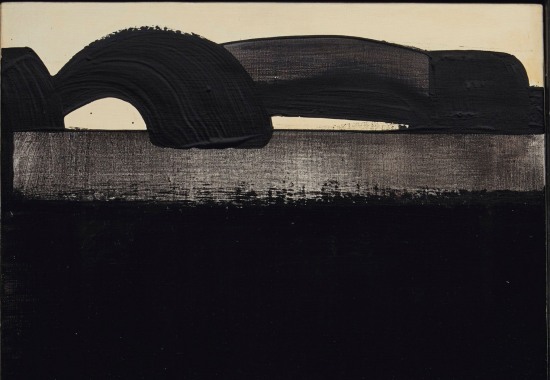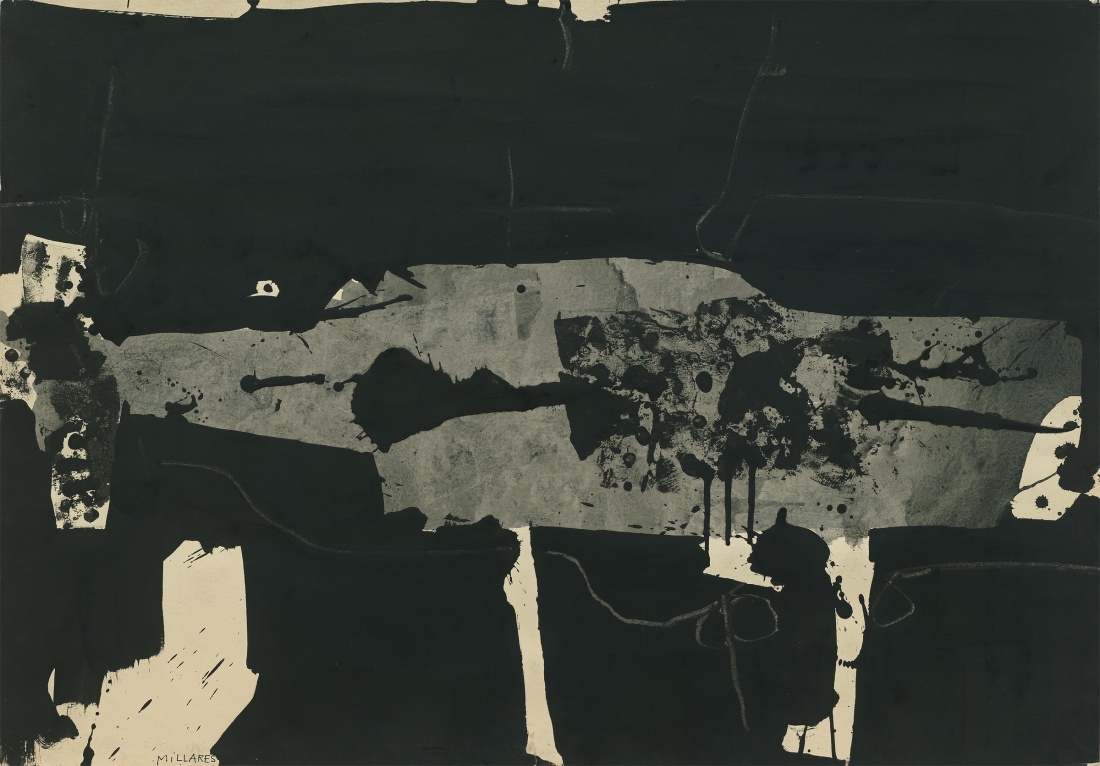
(1926 – 1972)
Manolo Millares played an important role in the development of postwar abstract painting in Spain. Born in Las Palmas in the Canary Islands, he was self-taught as an artist and his early work, the’ pictografías canarias,’ reveals both the influence of surrealism, as practiced by Miró and Klee, and the art of the indigenous Guanche culture of his homeland. In 1955, Millares moved to Madrid, where he became a leading member of the postwar avant-garde. Two years later, he co-founded the group ‘El Paso’ (The Step), along with fellow painters Antonio Saura, Luis Feito, and Rafael Canogar. The formation of ‘El Paso’ represented a movement by the Spanish modernists to forge links with the European avant-garde, specifically the French Art Informel movement, after several decades of isolation due to the Spanish Civil War and the Franco dictatorship. ‘El Paso’ was an influential precursor to contemporary Spanish artists such as Antoni Tàpies and Miquel Barceló.
Around 1955, Millares began creating paintings and mixed-media collages, primarily in black and white, that were inspired by the clothes used to shroud the mummies buried on the Canary Islands. The heavy ground is punctuated by light calligraphic lines and areas of bright white that create a powerful tension between density and void—the paintings are, in his words, an “art of explosion and protest, of a passionate means of expression that destroys itself so as to rebuild itself ipso facto from its ruins.”

Manolo Millares
Untitled
27.75 x 39.75 inches
Gouache on paper
1961